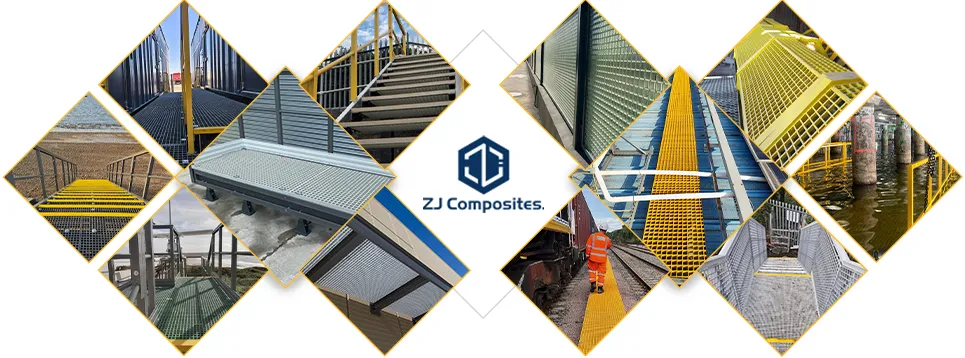loading...
- No. 9, Xingyuan South Street, Dongwaihuan Road, Zaoqiang County, Hengshui, Hebei, China
- admin@zjcomposites.com
- +86 15097380338
- Welcome to visit our website!
frp vessel price
Understanding FRP Vessel Pricing Factors and Insights
Fiber Reinforced Plastic (FRP) vessels, known for their durability, lightweight nature, and resistance to corrosion, are increasingly utilized across various industries, ranging from chemical processing to water treatment. As the demand for these vessels continues to grow, understanding the pricing mechanisms behind them is essential for manufacturers, suppliers, and end-users alike. This article delves into the factors influencing FRP vessel prices and provides insights into the market landscape.
1. Raw Materials and Production Costs
The primary components of FRP vessels include the reinforcing fibers (usually glass or carbon fibers) and the resin (typically polyester, vinyl ester, or epoxy). The costs of these raw materials significantly impact the final price of FRP vessels. For instance, fluctuations in the price of resin due to oil market changes can lead to unpredictable pricing for manufacturers. Additionally, the costs associated with skilled labor, machinery maintenance, and energy consumption during the production process also contribute to the overall expense.
2. Design Complexity and Customization
FRP vessels can be produced in various designs and sizes, which can affect pricing. Custom designs, such as specific shapes, sizes, or internal configurations to suit particular applications, often result in higher costs due to the need for specialized tooling and extended production times. Conversely, standardized vessels benefit from economies of scale, reducing costs and making them more affordable. Therefore, customers must carefully evaluate their requirements and decide between customized solutions and off-the-shelf products.
3. Regulatory Compliance and Quality Standards
FRP vessels are subject to various regulatory standards concerning safety, environmental protection, and quality assurance. Compliance with these standards, including certifications such as ISO or ASME certifications, necessitates additional investment in quality control and testing procedures. The cost of ensuring that vessels meet these regulatory requirements is often reflected in the product price. Customers should be aware of the importance of purchasing vessels from manufacturers that adhere to these standards to ensure safety and reliability.
frp vessel price

4. Market Demand and Competition
The pricing of FRP vessels is also influenced by supply and demand dynamics in the market. In periods of high demand, such as when industries experience a surge in production or expansion, prices may increase due to limited supply. Conversely, when the market is saturated, prices may drop as manufacturers compete to attract buyers. Understanding the current market trends can help customers make informed purchasing decisions and potentially negotiate better prices.
5. Geographic and Economic Factors
Geographic location plays a critical role in determining the price of FRP vessels. Shipping costs, taxes, and tariffs can vary significantly based on the origin and destination of the products. Moreover, economic conditions in a particular region can affect both production costs and consumer purchasing power, further influencing pricing strategies for manufacturers. For instance, regions with advanced manufacturing capabilities may have lower production costs, thus impacting the prices of vessels produced there.
6. Future Trends and Innovations
As technology evolves, the production methods and materials used in creating FRP vessels are also changing. Innovations such as automated manufacturing processes and the introduction of new, more cost-effective materials can drive down prices in the future. Additionally, growing environmental consciousness may lead to the development of more sustainable resources, potentially affecting costs.
Conclusion
In conclusion, the price of FRP vessels is influenced by a multifaceted array of factors including raw material costs, design complexities, regulatory compliance, market dynamics, geographic considerations, and emerging trends. For businesses looking to purchase FRP vessels, it is crucial to consider these elements to ensure that they receive a product that offers the best value for their specific needs. By staying informed about market conditions and technological advancements, customers can make strategic decisions that align with their operational goals and budgets.
-
The Rise of FRP Profiles: Strong, Lightweight, and Built to LastNewsJul.14,2025
-
SMC Panel Tanks: A Modern Water Storage Solution for All EnvironmentsNewsJul.14,2025
-
GRP Grating: A Modern Solution for Safe and Durable Access SystemsNewsJul.14,2025
-
Galvanized Steel Water Tanks: Durable, Reliable, and Ready for UseNewsJul.14,2025
-
FRP Mini Mesh Grating: The Safer, Smarter Flooring SolutionNewsJul.14,2025
-
Exploring FRP Vessels: Durable Solutions for Modern Fluid HandlingNewsJul.14,2025
-
GRP Structures: The Future of Lightweight, High-Performance EngineeringNewsJun.20,2025
